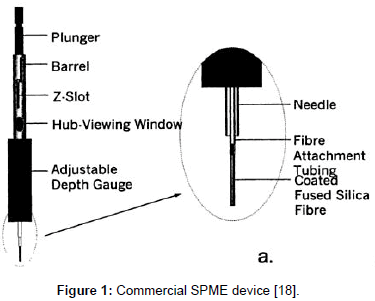Handbook Of Solid Phase Microextraction Pdf Writer
Breast cancer (BC) remains the most prevalent oncologic pathology in women, causing huge psychological, economic and social impacts on our society. Currently, the available diagnostic tools have limited sensitivity and specificity. Metabolome analysis has emerged as a powerful tool for obtaining information about the biological processes that occur in organisms, and is a useful platform for discovering new biomarkers or make disease diagnosis using different biofluids. Ford Focus Stereo Wiring Manual For Mth. Volatile organic compounds (VOCs) from the headspace of cultured BC cells and normal human mammary epithelial cells, were collected by headspace solid-phase microextraction (HS-SPME) and analyzed by gas chromatography combined with mass spectrometry (GC–MS), thus defining a volatile metabolomic signature. 2-Pentanone, 2-heptanone, 3-methyl-3-buten-1-ol, ethyl acetate, ethyl propanoate and 2-methyl butanoate were detected only in cultured BC cell lines.
Volatile organic compounds (VOCs) from the headspace of cultured BC cells and normal human mammary epithelial cells, were collected by headspace solid-phase microextraction (HS-SPME) and analyzed by gas chromatography combined with mass spectrometry (GC–MS), thus defining a volatile. The relatively new technique of solid phase microextraction (SPME) is an important tool to prepare samples both in the lab and on-site. SPME is a 'green' technology. This handbook offers a thorough background of the theory and practical implementation of SPME. SPME protocols are. About the Editor. The relatively new technique of solid phase microextraction (SPME) is an important tool to prepare samples both in the lab and on-site. SPME is a 'green' technology because it eliminates organic solvents from analytical laboratory and can be used in environmental, food and fragrance, and forensic and drug analysis. Solid Phase Microextraction: Theory and Practice Janusz Pawliszyn Solid phase microextraction (SPME) is a recently proposed solvent-free sampling and sample preparation technique. SPME represents a quick, sensitive, and economical approach that can be adopted for field work and can be easily integrated with.

Multivariate statistical methods were used to verify the volatomic differences between BC cell lines and normal cells in order to find a set of specific VOCs that could be associated with BC, providing comprehensive insight into VOCs as potential cancer biomarkers. Adobe Air Installer Standalone here. The establishment of the volatile fingerprint of BC cell lines presents a powerful approach to find endogenous VOCs that could be used to improve the BC diagnostic tools and explore the associated metabolomic pathways. Although there has been a sustained decline in mortality rates over recent decades, breast cancer (BC) continues to be the most prevalent malignancy among women worldwide and is a major cause of female deaths.
A number of associated factors, including age, gender, ethnicity, lifestyle (tobacco, alcohol, diet, and lack of exercise) and genetics, such as mutations in the tumor suppressor genes BRCA1 (mutation on chromosome 17) and BRCA2 (mutation on chromosome 13), have been identified as the most common inherited causes of susceptibility to BC. The BRCA1 and BRCA2 genes encode very large proteins that are expressed in a wide variety of different tissues and are implicated in processes such as DNA repair and recombination, checkpoint control of the cell cycle, and transcription. Families with a high incidence of BC may carry mutations in one or both of these genes, or alternatively, members of these families may have similar lifestyle habits and may have been affected by similar environmental factors.
Furthermore, other important gene mutations related to BC development include mutations in ATM (ataxia-telangiectasia mutated), TP53 (tumor protein p53), and PTEN (phosphatase and tensin homolog deleted on chromosome ten). Most of these are rare and often do not increase the risk of BC as much as do mutations in the BRCA genes. Ls 2011 Platin Edition Crack. Detection of BC at an early stage is extremely important to reduce the burden of disease because earlier detection leads to better patient outcomes, as metastatic states are avoided. Currently, there is no single screening test that is totally reliable, and a number of tests can be combined to help detect early stage BC. Current screening techniques include self-examination for lumps or nodes, mammography, ultrasound, magnetic resonance imaging and biopsy using a fine needle or similar instrument to aspirate or otherwise remove a sample of fluid or cells from any suspicious lump or node for microscopic examination. These methods are generally invasive, time-consuming and require special medical skills.